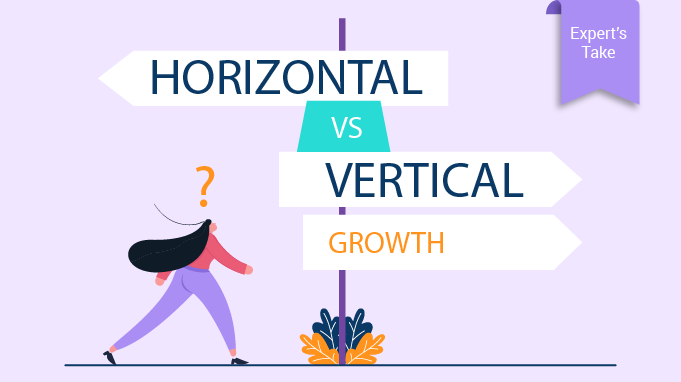The Conundrum of Horizontal Growth
Management schools attempt to provide students the breadth and depth of knowledge that would prepare them for careers in the corporate world.
Interactions with leaders from varied industries aim to give them an insight into the workings of the corporate behemoths that are chasing growth and market leadership. Exposure to multiple disciplines is believed to lead to the creation of multi-dimensional professionals that can deflect the biggest challenges that the world of business is most likely to throw at them.
But, even as they do so, they establish and cement the conception of the ‘corporate ladder’ - a vertical rise upwards that signifies achievements, growth, success, and all that trappings that come with them. The faster the rise up the ladder to the top rung, the more successful, is the climber perceived to be. Too much time on one of the rungs of the ladder, and not only the others but even the professional begins to nurture an element of self-doubt regarding his capabilities.

And why is this so? To be fair, it would be unfair to blame management education. If you just rewind the life of any management student and take her back to her school years, you’ll recognize the obvious. Ever since she started her journey of learning from the Nursery (or equivalent) to the time she strode purposefully into the B-school, growth was moving one level up.
From class I to class II to class III and so on. You get the drift, right? The entire ecosystem - be it the school authorities and parents - strengthens this understanding by elevating the year-end class ‘progression’ to a celebration with its mix of dance performances, bugles, congratulatory speeches and more. Even as the spotlights shine on the students striding onto the stage to collect their badges of honor, proud parents beam with joy and go trigger happy on their cell phones, capturing images that are instantaneously uploaded on social media. And the celebration moves outside the auditorium, with family and friends joining in the frenzy.
And herein lies the conundrum. How do you change the mindset that has solidified over 21 years that growth, by design, is vertical only? That unless you move to the right on a number line or move upwards on a graph, you haven’t progressed?
While purists may scoff at the adage - Jack of all trades, master of none - it’s probably the right time to relook at it. After all, with the pace of change around us, it’s unlikely that having a unipolar skill or expertise will provide us a lengthy and successful career. As per World Bank’s 2019 report, ‘The Changing Nature of Work’, “it is important to understand that many children currently in primary school will work in jobs as adults that do not even exist today”. The text here has been reproduced directly from the report purely for us to absorb its sincerity and severity. Even the most non-academic or non-competitive amongst us would understand that in a scenario like this, it would behoove us to groom our future generations (and indeed, ourselves) into multi-faceted and multi-skilled professionals.
So, how does one do that? For starters, we need to develop an understanding and value horizontal growth, as much and if not more, than vertical growth. Post working in the capacity of an HR Business Partner in your organization, try and navigate your movement into the Talent Acquisition team or the Compensation and Benefits team within the Human Resources function, even if it doesn’t come with a promotion. This will help give you get a ‘hands-on’ experience and a deeper understanding of the function.
Such horizontal movements have exponential benefits if they happen to move you out from your existing function or department. It is but natural that having spent a reasonable amount of time in a particular role or function, an individual develops a certain level of comfort. Moving outside one’s current situation, therefore, brings in a modicum of discomfort. It is well established by thought leaders that lack of comfort is an important catalyst in true growth for it encourages one to stretch and develop one’s capability.
Having spent a couple of years at a particular level in the Human Resources function, if you are offered an opportunity to move into the Sales function at the same level, grab it with both hands and with your laptop! An opportunity to move closer to your organization’s customer will no doubt strengthen your understanding of your business.
A more well-rounded view of the business will give you an edge over others who are following the traditional uni-directional growth model and open up opportunities, both, within and outside, your organization. Such a path of exploration could also lead you to exploring movements outside of your current industry, enabling your growth into a truly multi-domain professional.
Finally, I would like to just reinforce the idea that in your professional journey, utilize periods of horizontal growth smartly even as you make some deft vertical moves, and you will realise that your career will be more lengthy, more fulfilling and more exciting. Now, who wouldn’t want that!
I would love to hear your views on this subject. Do connect with me on LinkedIn or drop me an email via the links given below.

















